This section details normal erythroid maturation phenotypes. Knowledge of normal phenotypes is important in identifying cell populations and recognising phenotypic aberrancy.
Normal Erythroid Phenotypes

Maturation Pathways
Side Scatter and CD45
As erythroid cells mature, they become smaller and the nucleus shrinks, eventually being expelled. Hence, their side scatted decreases as they mature. They also progressively lose CD34.
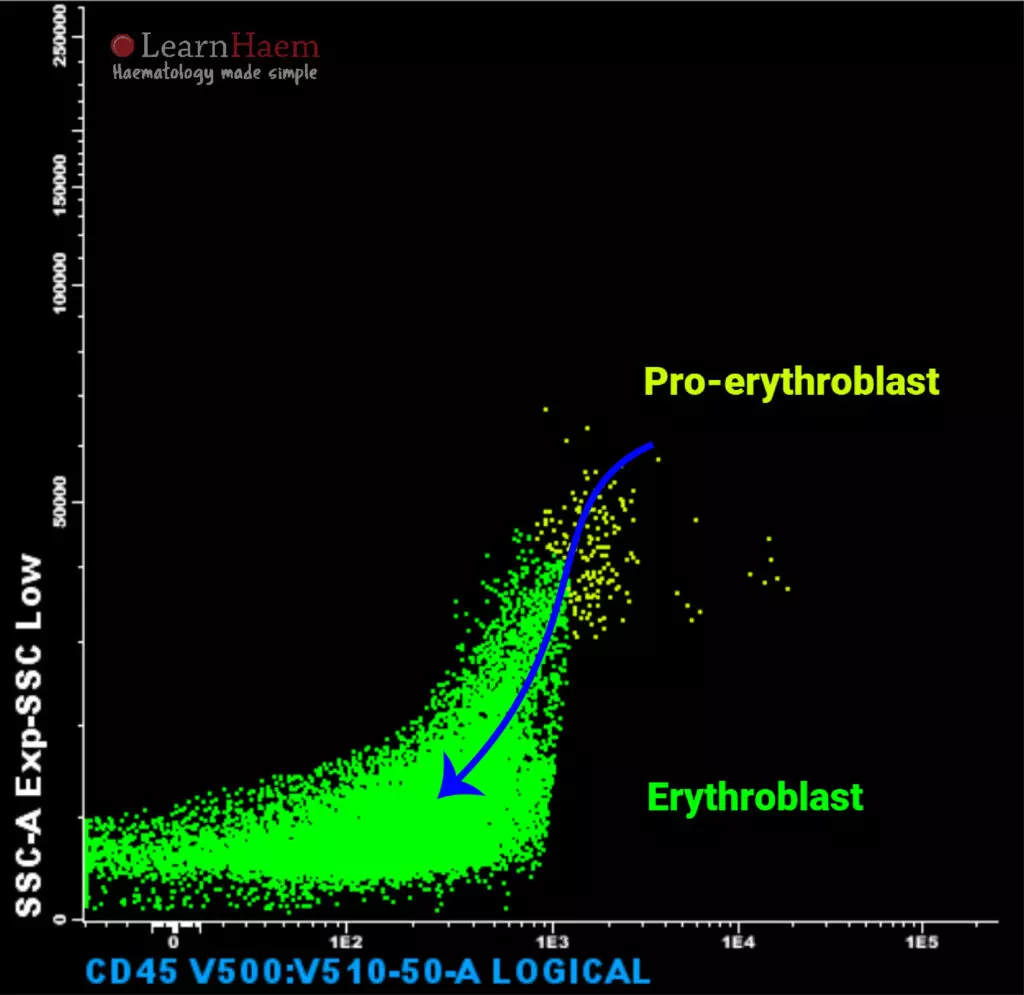
Side Scatter and CD34
As erythroid cells mature, they lose CD34 and their side scatter reduces.
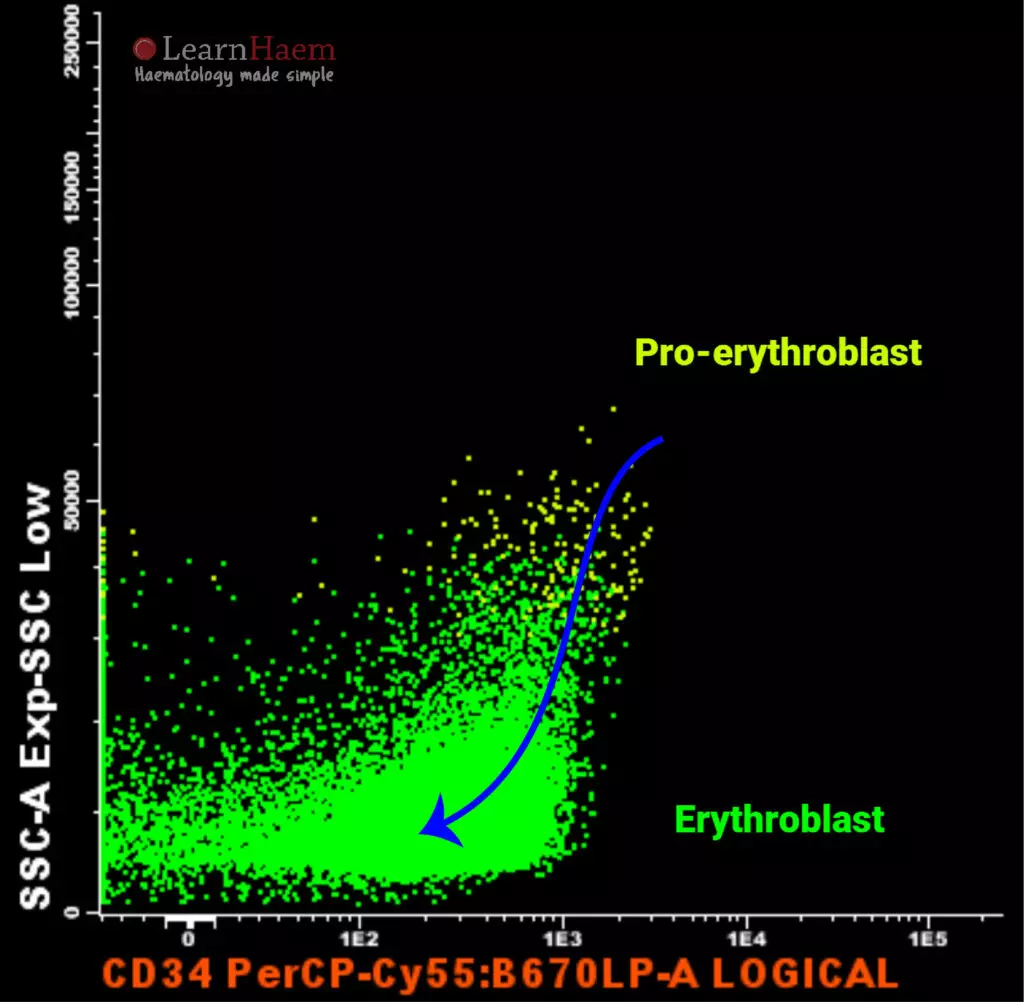
CD117 and HLA-DR
Pro-erythroblasts are CD117+ and HLA-DR-dim. As they mature into erythroblasts, both CD117 and HLA-DR are lost.
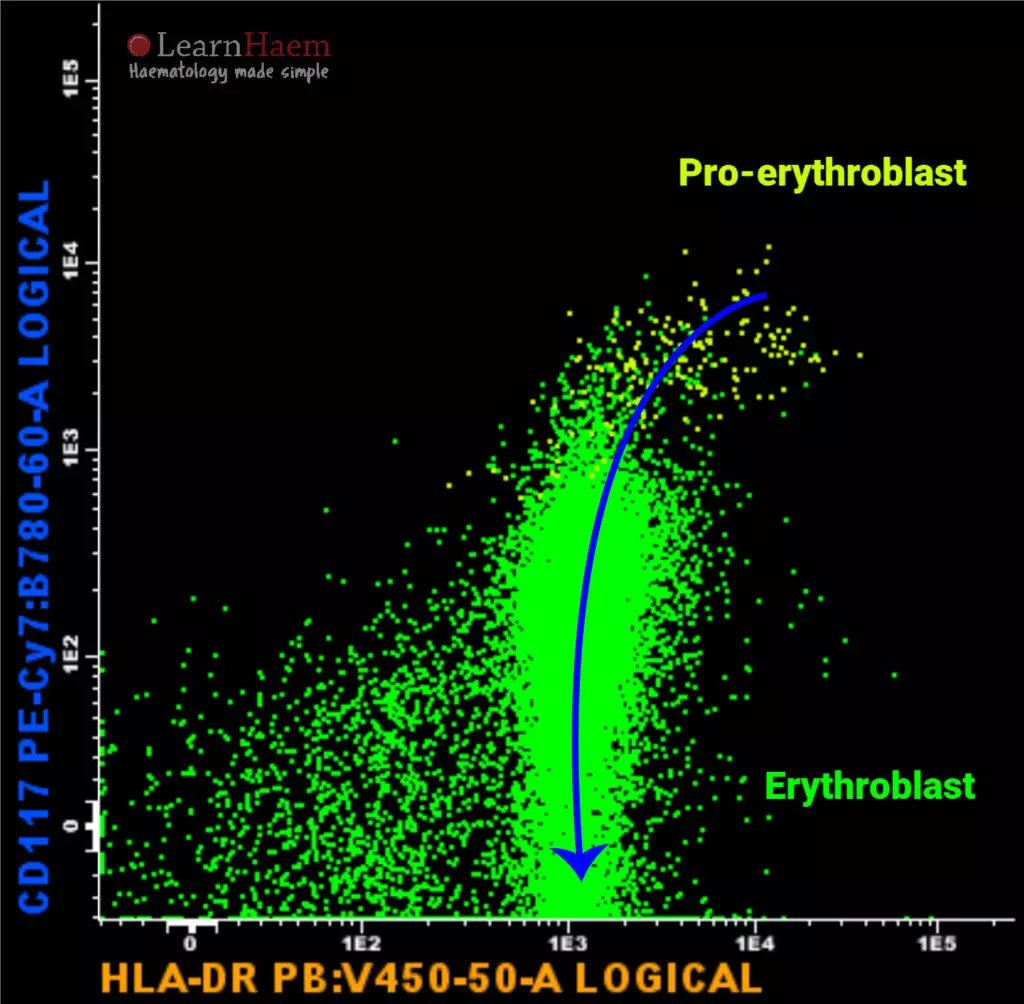
CD34 and CD33
Early precursor cells are CD34+ and CD33+. Pro-erythroblasts are negative for both CD33 and CD34, as are more mature erythroblasts.
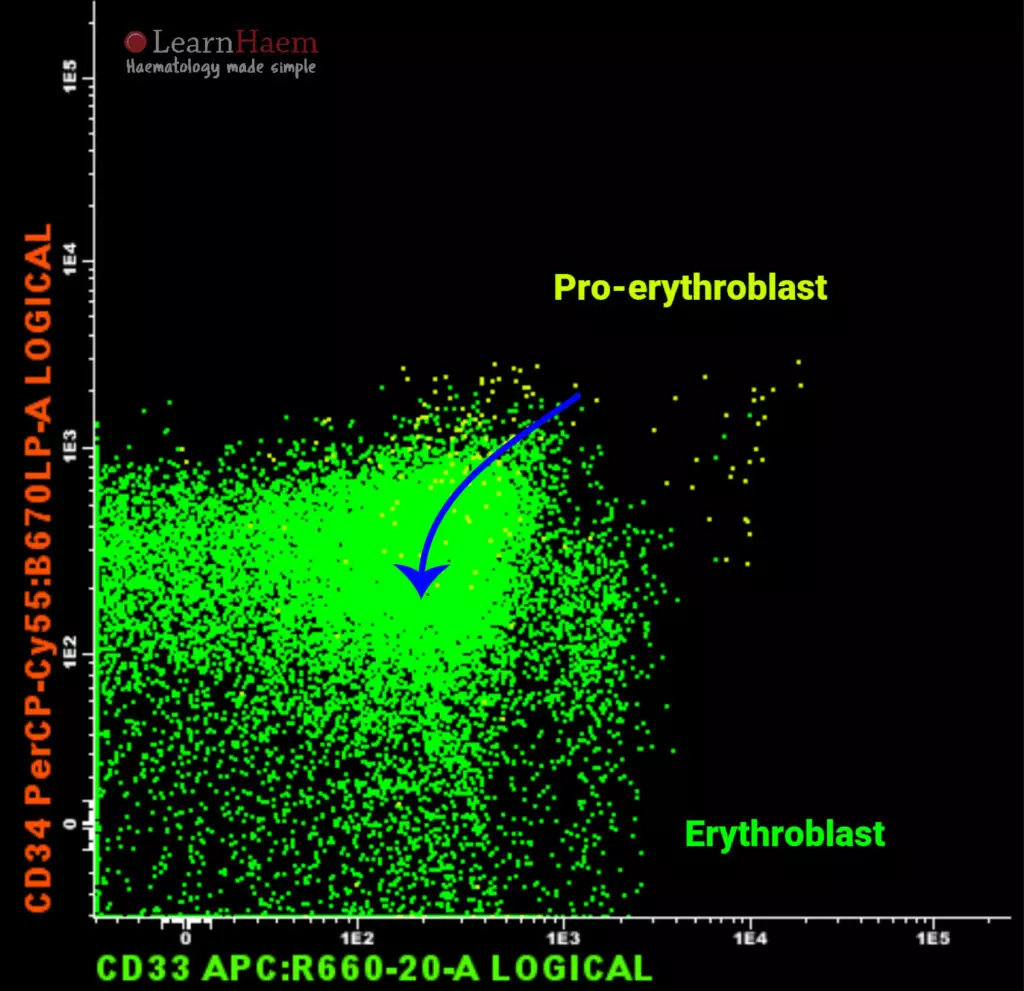
CD105 and CD36
As stem cells develop into pro-erythroblasts, they gain CD105 and CD36. CD105 is lost as pro-erythroblasts mature into erythroblasts, disappearing shortly after CD117 is lost, while CD36 expression is slightly reduced but overall retained.
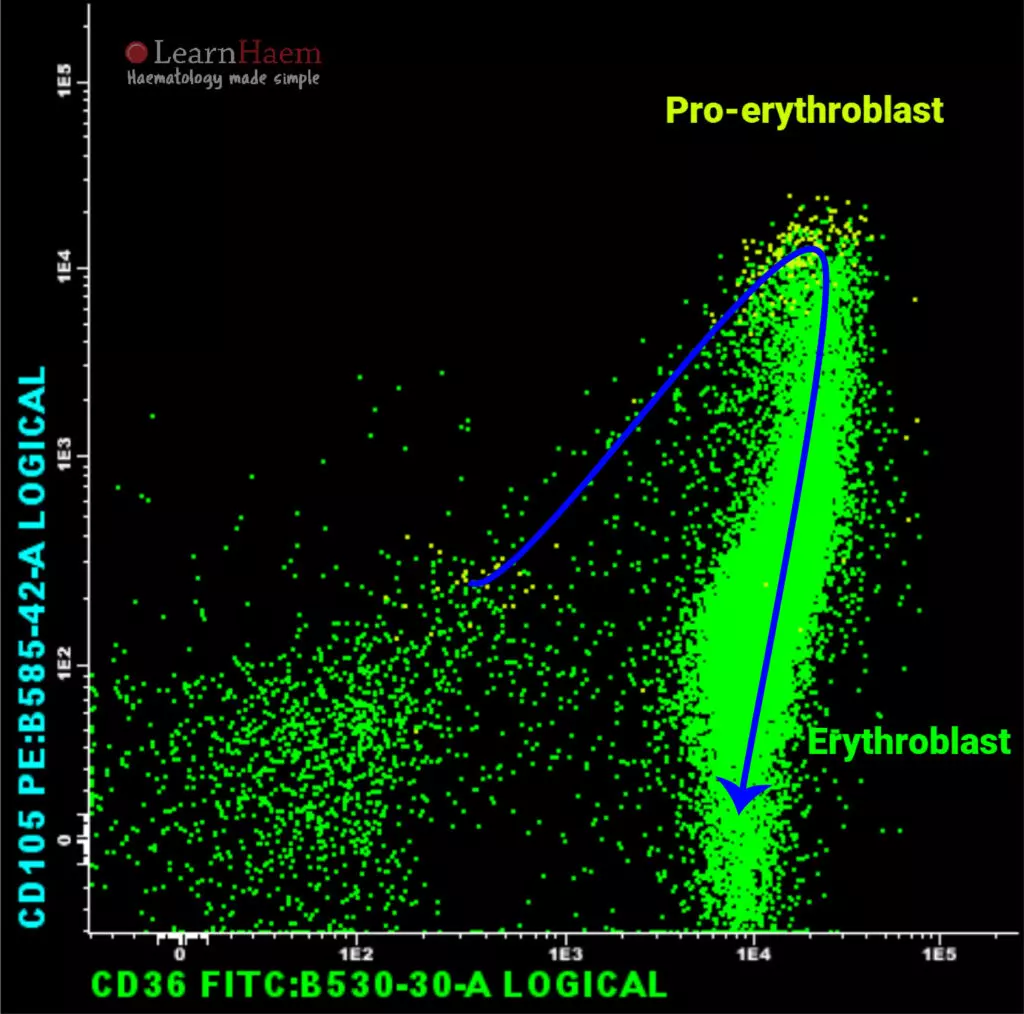
CD36 and CD71
As stem cells develop into pro-erythroblasts, they gain CD36 and CD71. CD71 is lost as the nucleus is expelled and erythroblasts mature into red blood cells, while CD36 expression is slightly reduced but overall retained.
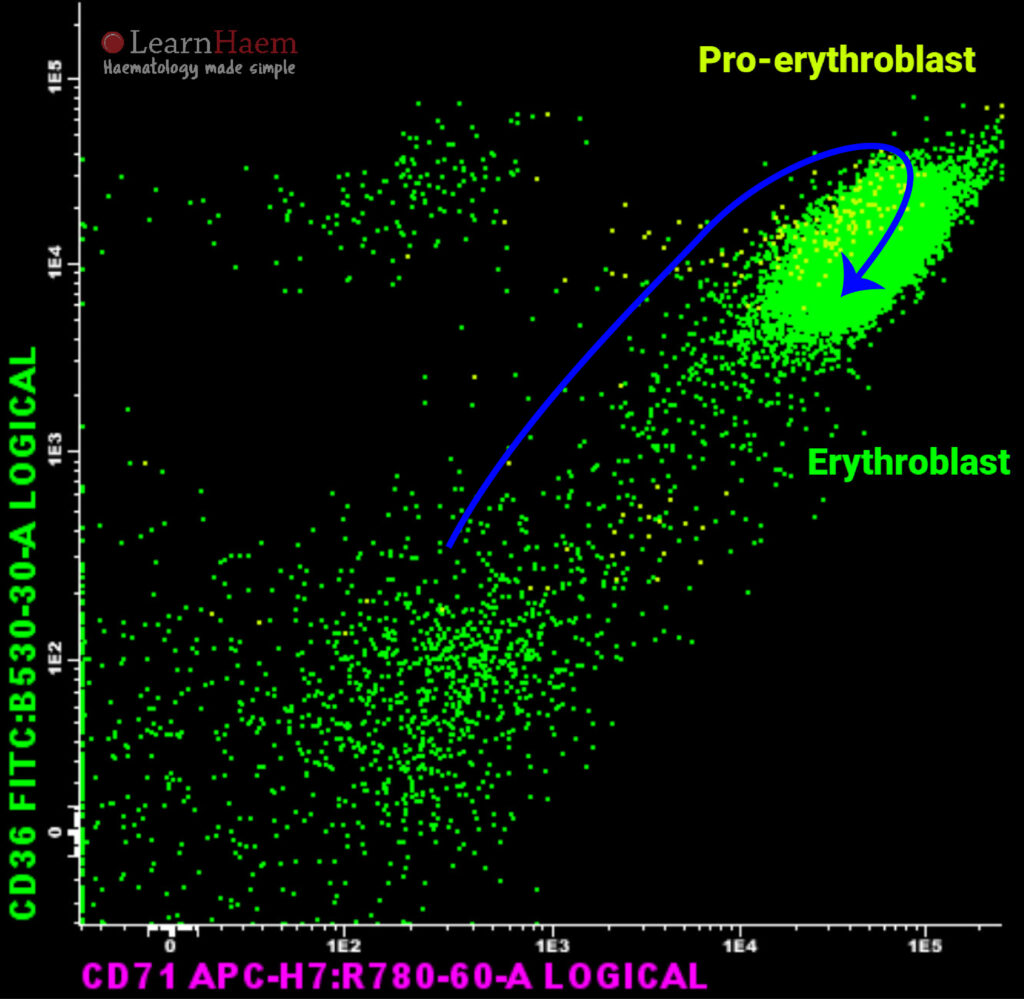
This view is also useful for excluding unlysed red blood cells, which are CD36+/71-. Dysplastic erythroblasts tend to be dim for both CD36 and CD71.
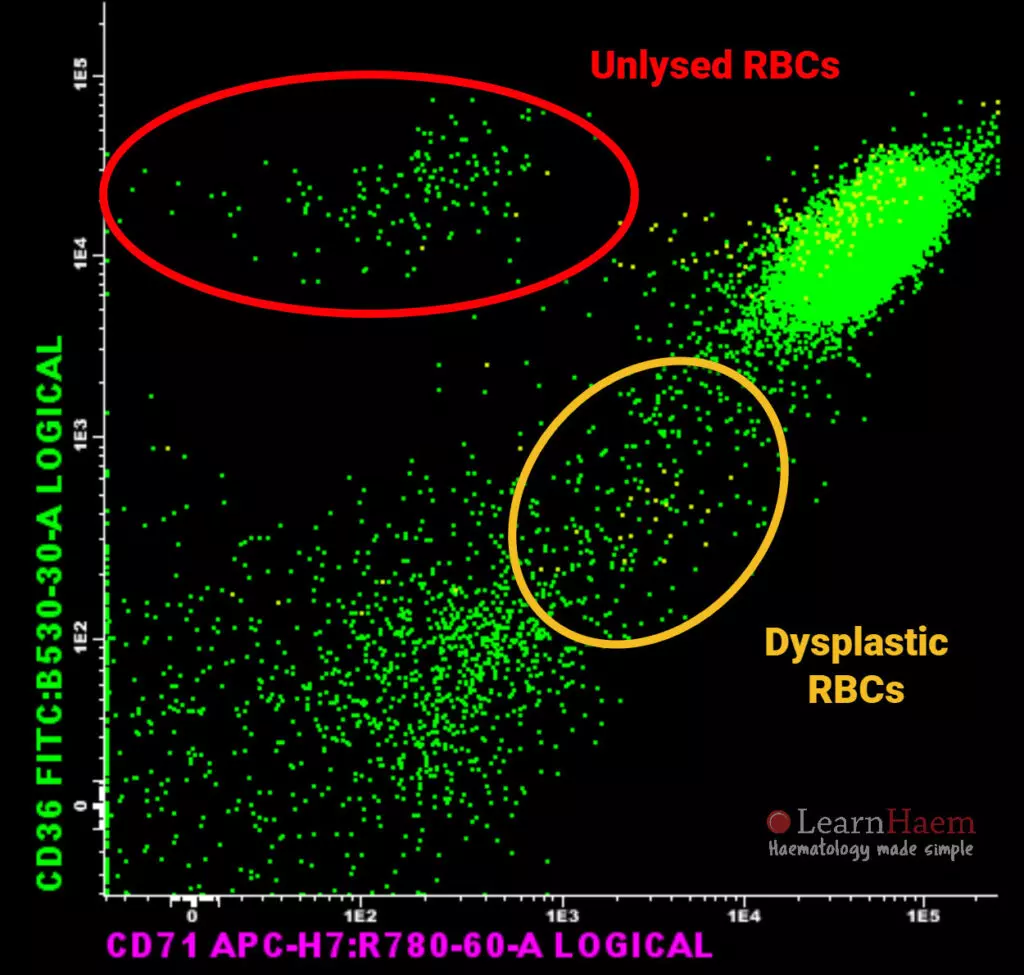

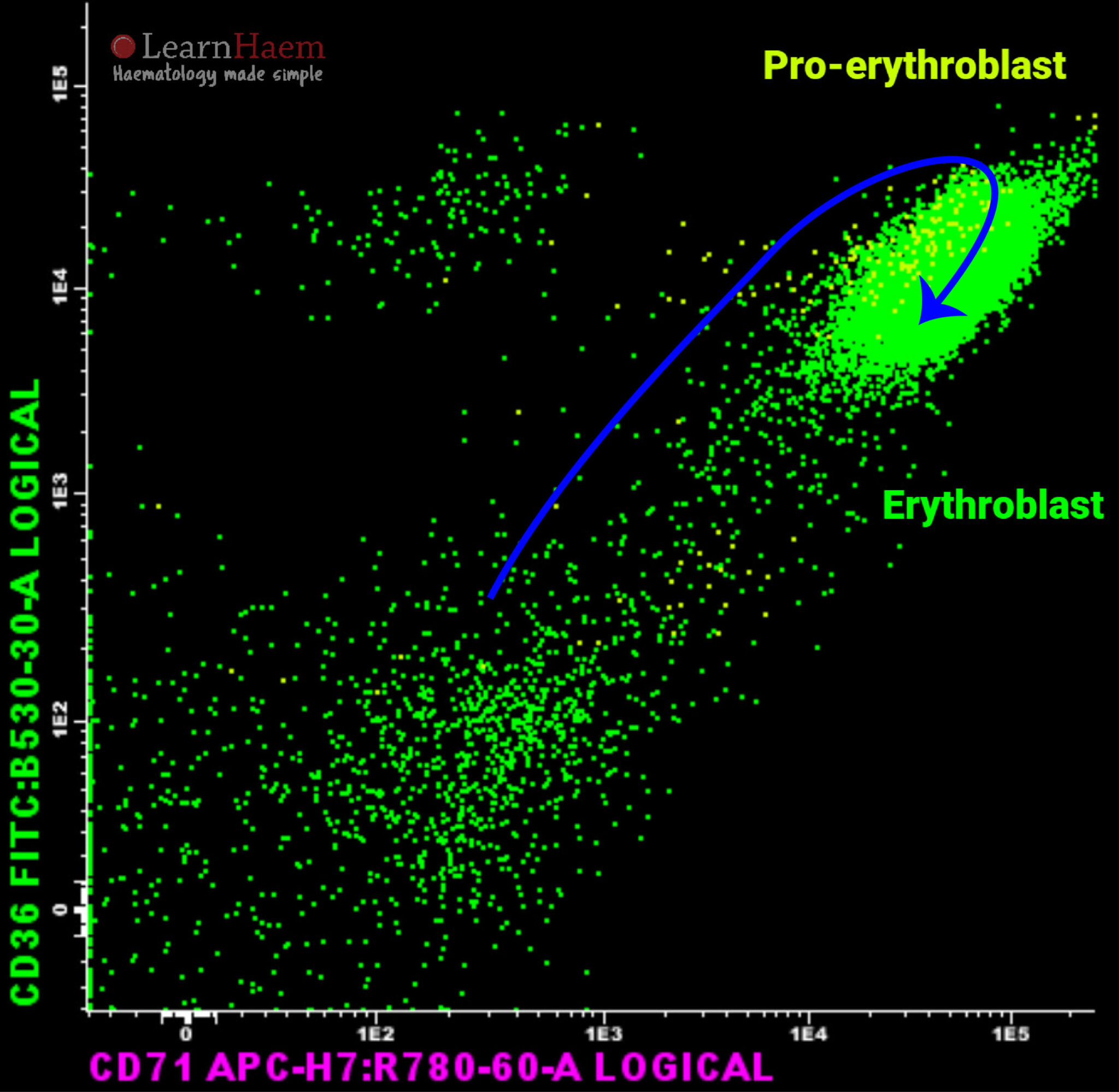
Leave A Comment